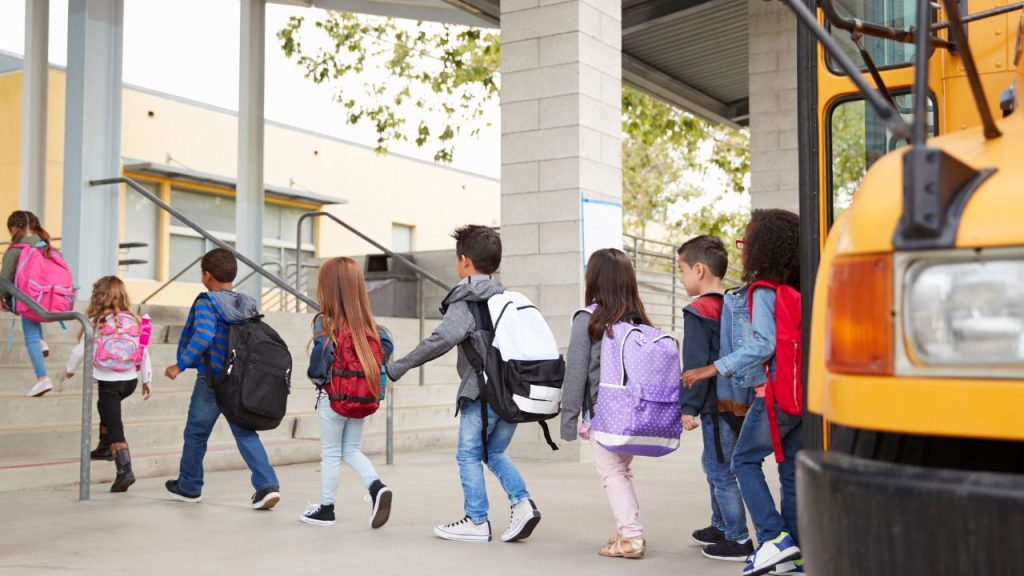Parents and teachers sometimes overlook the benefits of recess for Elementary School children. While it might not seem like it at a glance, it is one of the most significant parts of the day.
In this quick guide, we’ll take a closer look at the importance of recess for students.
Are Elementary School Students Entitled to Recess?
All educators and parents should be aware of the regulations surrounding the importance of recess. The American Academy of Pediatrics recommends that elementary school students receive 20 to 60 minutes of recess daily.
Physical activity improves learning and development as well as overall health. It improves social skills, conflict resolution skills, and disease control and prevention.
10 Benefits of Recess in Elementary School
Students Develop a Better Relationship with School

Research shows that 75% of high school students have bad feelings about school, leading to academic and personal issues.
Experiences in elementary school shape how children feel about school. School districts should strive to make school a positive experience for children to build a solid educational foundation. The physical benefits of just 20 minutes of recess will help.
Recess is a part of the day that all children can look forward to, regardless of any issues that arise inside the classroom.
Students get more enjoyment from their studies from the increased balance throughout the day.
Recess Supports Academic Performance
Students who get more playtime often achieve higher marks. Research has shown that test scores improve with more recess time.
This phenomenon occurs partly because of increased brain oxygen, which supports a child’s learning capabilities. Recess actively encourages the development of problem-solving. Movement breaks allow students to stay in top form throughout the day.
Students Become More Engaged with the Work
Too much time in the classroom can cause motivation and engagement levels to drop. However, recess allows students to enter a fresh environment, thus preventing any afternoon decline. Returning to the classroom after recess makes the next assignment or lesson feel fresh and exciting. Students are then far more likely to approach it with a positive mindset.
Studies into the links between recess and student engagement found an average improvement of 15%.
Naturally, engaged students will see many benefits across academic performance, personal growth, and their love of school.
Recess Encourages Imaginative Play

“I don’t know about everyone else, but I really loved lunch and recess because it was an opportunity to get carried away with your imagination.”
Imaginative play at recess may involve solo play or activities with friends. Either way, their imaginations will stretch and develop.
Recess Provides Physical and Social Rewards
Some of recess’s most obvious benefits relate to social and physical development. Playing sports and other active tasks can aid a child’s strength, speed, balance, flexibility, and gross motor skills.
Social development is another vital part of a child’s life. During recess, students can build stronger friendships and communication skills through unrestricted interactions.
Outside Recess Increases Vitamin D Levels

Spending time outside supports physical and social development and increases sunlight exposure. Vitamin D is great for brain development and releases serotonin, which can help children stay calm and focused.
Moreover, the fresh air is excellent for a child’s physical and mental health. The importance of recess is even more noteworthy in the winter when children might not get much sunlight after school.
Recess Aids Independent Learning and Instruction Following
The Elementary School years are vital in a child’s development, helping to establish the habits that set them up for life. A rounded child should be capable of autonomous learning and following instructions. Recess benefits both independent and structured learning. It makes children more attentive, naturally supporting their ability to follow instructions.
Moreover, they will have to follow instructions from friends during the games they play at recess. When children are accustomed to solving problems for themselves during recess, they can transfer these skills to the classroom.
Students Get Much-Needed Breaks
“Never kid a kid who hasn’t had his recess.”
T.J Detweiler. Disney’s Recess.
Elementary School children focus on a task for 15 minutes to an hour, depending on their age. Recess allows kids to temporarily escape learning mode without leaving school mode.
Teachers also need the opportunity to recharge physically and mentally. Recess can actively regulate stress levels and keep teachers from reaching breaking points themselves.
Students Grow in Self-Confidence

Recess can support a child’s self-confidence in many ways. Firstly, recess allows students to perform better in the classroom, making them more confident.
The freedom to control their agenda during recess allows them to focus on what they are good at and enjoy. Naturally, this will significantly impact their confidence over time.
Recess is also an opportunity for children who struggle in the classroom to find areas where they thrive. Every child needs to know that they are good at something.
Recess Reduces Behavioral Problems
Finally, recess can help reduce discipline problems. When teachers deny recess, excessive boredom and energy can lead students to misbehave.
Recess allows children to burn energy, be creative, take control of their activities, and gain stimulation.
Moreover, recess means there will be a break during the day just as behavioral issues arise. This creates a far better learning environment for all students, especially those who want to learn.
The Final Word on the Importance of Recess
Recess helps elementary school kids improve their grades and supports their physical, social, and emotional growth. With recess in the schedule, every school day will be more successful.
For more information, check out:
- Learn Bright’s physical education article
- The current recommendations from the Centers for Disease Control







